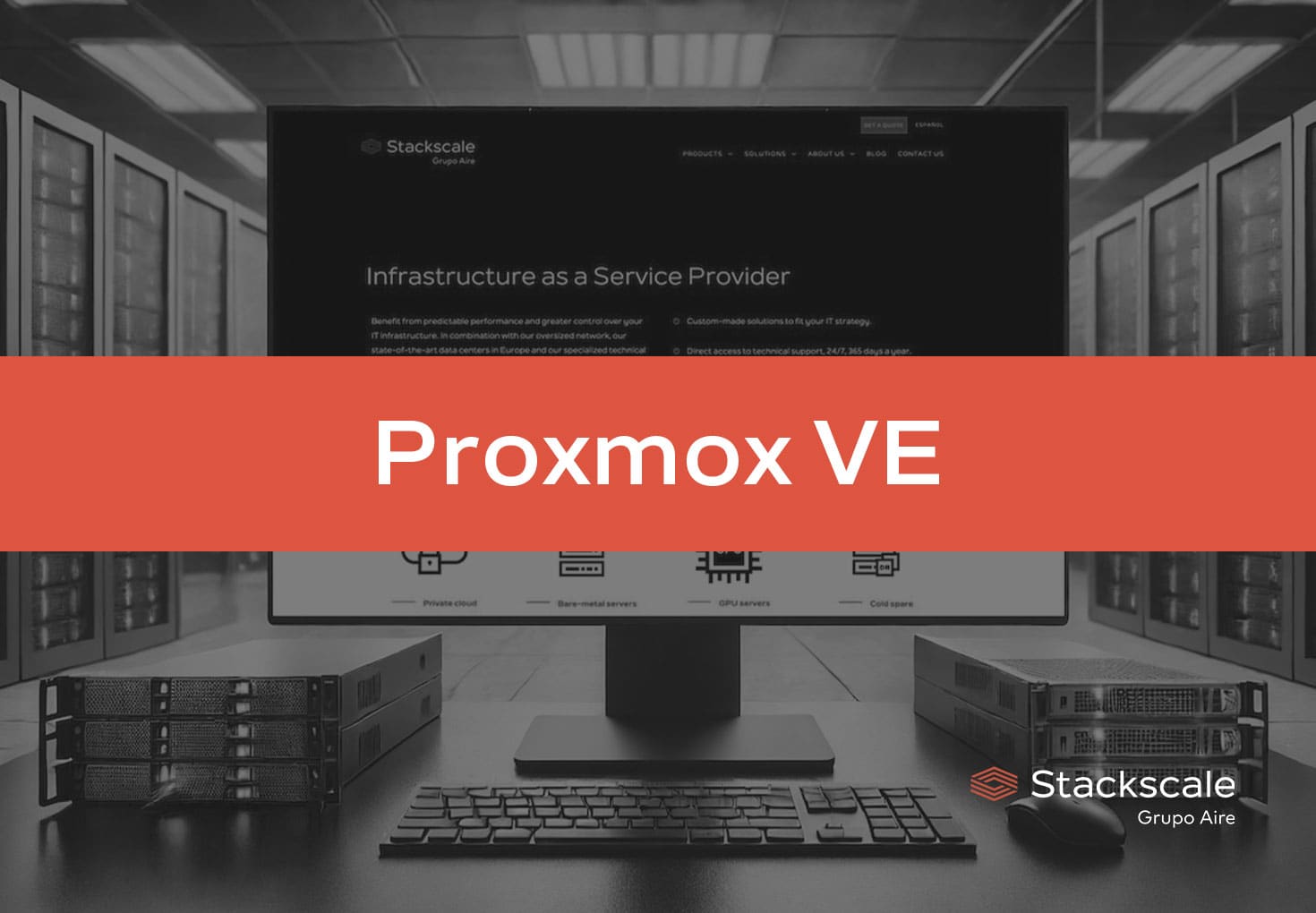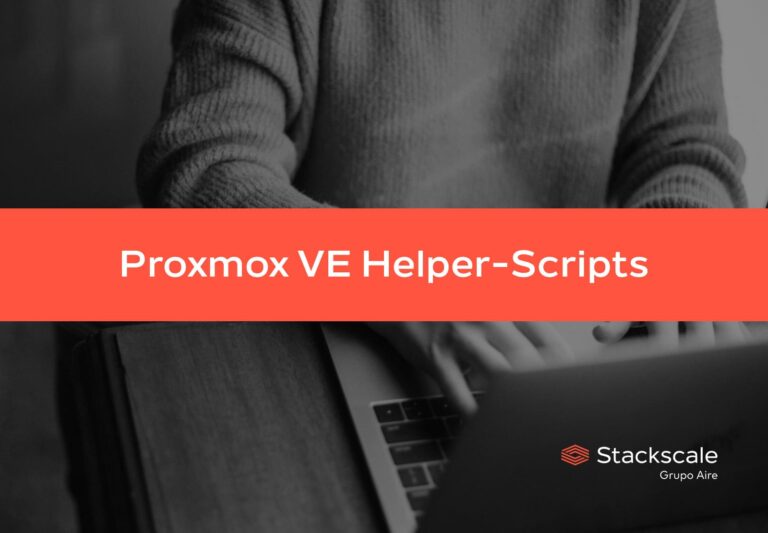Proxmox Virtual Environment 9.0 is now available, marking a major step forward in key features such as snapshots, high availability, and software-defined networking. At Stackscale, as a provider of private cloud infrastructure with Proxmox VE support, we review its innovations and compare them with the previous version to help you make informed decisions for your deployments.
A Version Designed for Enterprise Environments
Officially released on July 8, 2025, Proxmox VE 9.0 positions itself as a mature, powerful alternative to commercial platforms like VMware vSphere, Hyper-V, or Nutanix. This open-source virtualization system has built a growing, active community thanks to its reliability, customization capabilities, and complete independence from proprietary licenses. Key highlights include:
- Storage vendor-agnostic snapshots.
- New affinity rules in high-availability (HA) environments.
- Support for “Fabrics” in software-defined networking (SDN).
- Completely redesigned mobile web interface using Rust and the Yew framework.
- Updated software stack with the latest stable versions of Debian, kernel, hypervisors, and distributed file systems.
Beyond these technical improvements, Proxmox VE 9 strengthens its role as a foundation for hybrid multicloud, edge computing, and DevOps platforms.
Comparison: Proxmox VE 8 vs Proxmox VE 9
| Feature | Proxmox VE 8.x | Proxmox VE 9.0 |
|---|---|---|
| Base OS | Debian 12 “Bookworm” | Debian 13 “Trixie” |
| Kernel | Linux 6.2 / 6.5 | Linux 6.14.8-2 |
| QEMU | 7.x / 8.x | 10.0.2 |
| LXC | 5.x | 6.0.4 |
| ZFS | 2.1.x | 2.3.3 (supports adding disks to RAIDZ) |
| Ceph | Reef | Squid 19.2.3 |
| Snapshots | Backend-dependent | Vendor-agnostic (volume chains) |
| High Availability (HA) | No affinity rules | Node/VM affinity rules |
| SDN Networking | Bridges and Open vSwitch | Introduction of “Fabrics” |
| Mobile Web UI | Legacy | Redesigned with Rust/Yew |
| Upgrade Path | Via APT, with precautions | Officially supported |
| Version Support | Until August 2026 | LTS (full cycle from 2025) |
Key Features in Depth
Vendor-Agnostic Snapshots
The new volume chains snapshot system is a paradigm shift in Proxmox VE. Unlike previous versions, snapshots no longer depend on the storage backend, enabling consistent block-level backups whether using local storage, NFS, Ceph, iSCSI, or external SAN arrays. This enhances disaster recovery strategies, automates testing environments, and speeds up cloning.
HA Affinity Rules
Proxmox VE 9 allows defining positive or negative affinity rules between VMs and nodes. This is essential for mission-critical environments, preventing two critical services from running on the same host or ensuring workloads run on preferred hosts. This integrates natively with failover systems for better availability.
Smarter Networking with “Fabrics”
The SDN system advances with the introduction of Fabrics: structures for building complex routed networks between nodes and containers. Benefits include:
- Multi-tenant segmentation.
- Hybrid cloud integration.
- Secure isolation between development and production.
It remains compatible with Linux bridges and Open vSwitch, increasing flexibility.
New Mobile Interface in Rust
The mobile web interface has been rebuilt in Rust using the Yew framework, improving usability, load times, and security. It delivers smoother management from smartphones or tablets without sacrificing the classic panel experience.
Ready for the Future
Although Debian 13 “Trixie” is officially released in August 2025, its key components were frozen since May after rigorous beta testing. This allowed Proxmox to confidently launch early without compromising stability.
The migration path from Proxmox VE 8.4 is supported and documented, including for environments running Ceph Reef. In such cases, a progressive upgrade to Ceph Squid is recommended before moving to VE 9.0.
Stackscale’s Perspective
Currently, at Stackscale we closely monitor the evolution of Proxmox VE 9 and its improvements. However, we recommend our customers keep Proxmox VE 8.4 in production for now, as it is still early to adopt the new version in critical environments. While Proxmox VE 9 introduces promising features, we advise giving it more time to mature, validate its stability with real workloads, and wait for best practices and community documentation to consolidate.
We provide bare-metal and private cloud infrastructure optimized for Proxmox VE environments. Our expertise allows us to support both production enterprises and integrators or developers adopting the Proxmox ecosystem.
With version 9’s arrival, our technical teams are ready to assist with transition planning, compatibility checks, and performance optimization.
“Proxmox 9 is a qualitative leap for enterprise virtualization without proprietary licenses. Universal snapshots, SDN improvements, and better HA allow us to deliver more resilient, predictable, and flexible environments than ever,” says David Carrero, co-founder of Stackscale and head of sales and marketing.
Conclusion
Proxmox VE 9.0 marks a before-and-after moment in the open-source virtualization landscape. Not just for its updated stack, but for its mature, production-ready features: advanced storage management, smart networking, modular HA, and a mobile-friendly interface.
With long-term support, modern hardware compatibility, and a growing community, Proxmox VE 9 strengthens its place as a robust, secure platform without proprietary dependencies.
At Stackscale, we’re ready to guide you through this transition—whether planning a migration, deploying new services, or scaling your infrastructure—to get the most out of this new Proxmox VE release.




